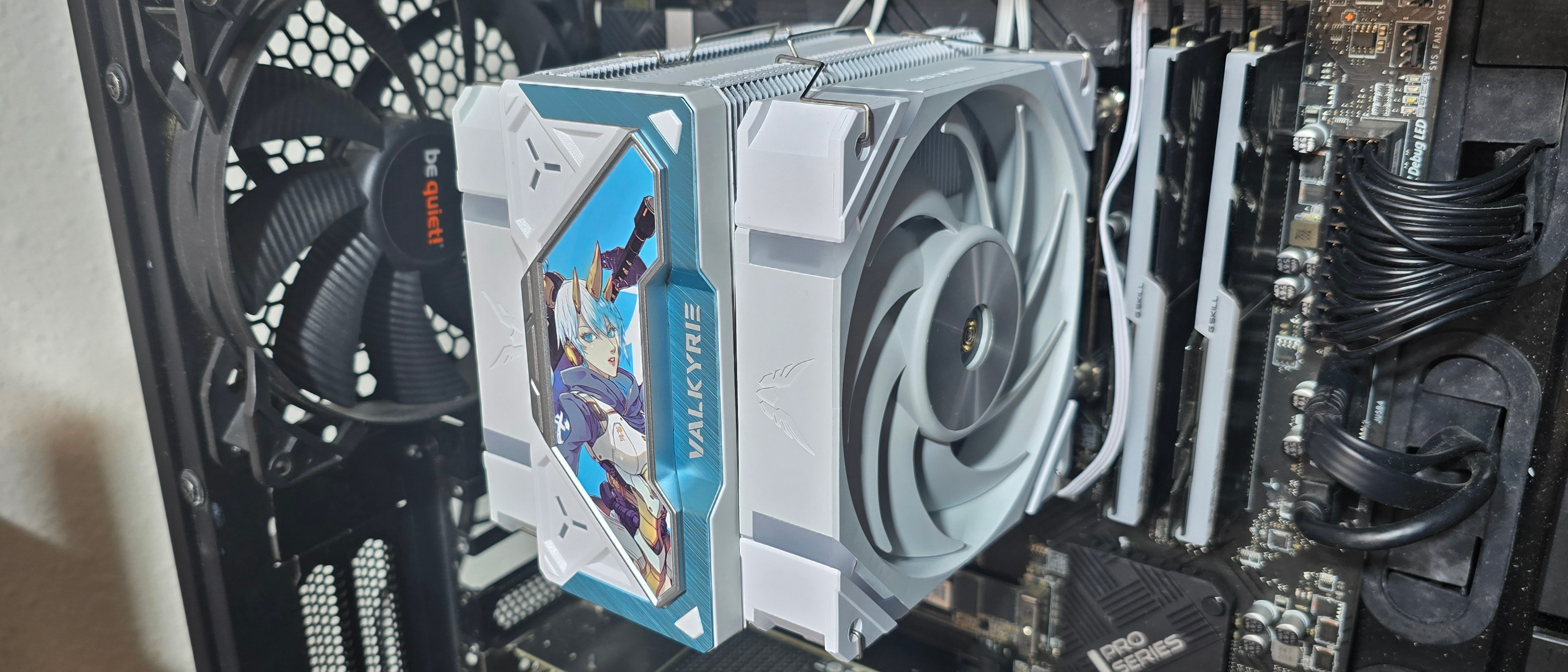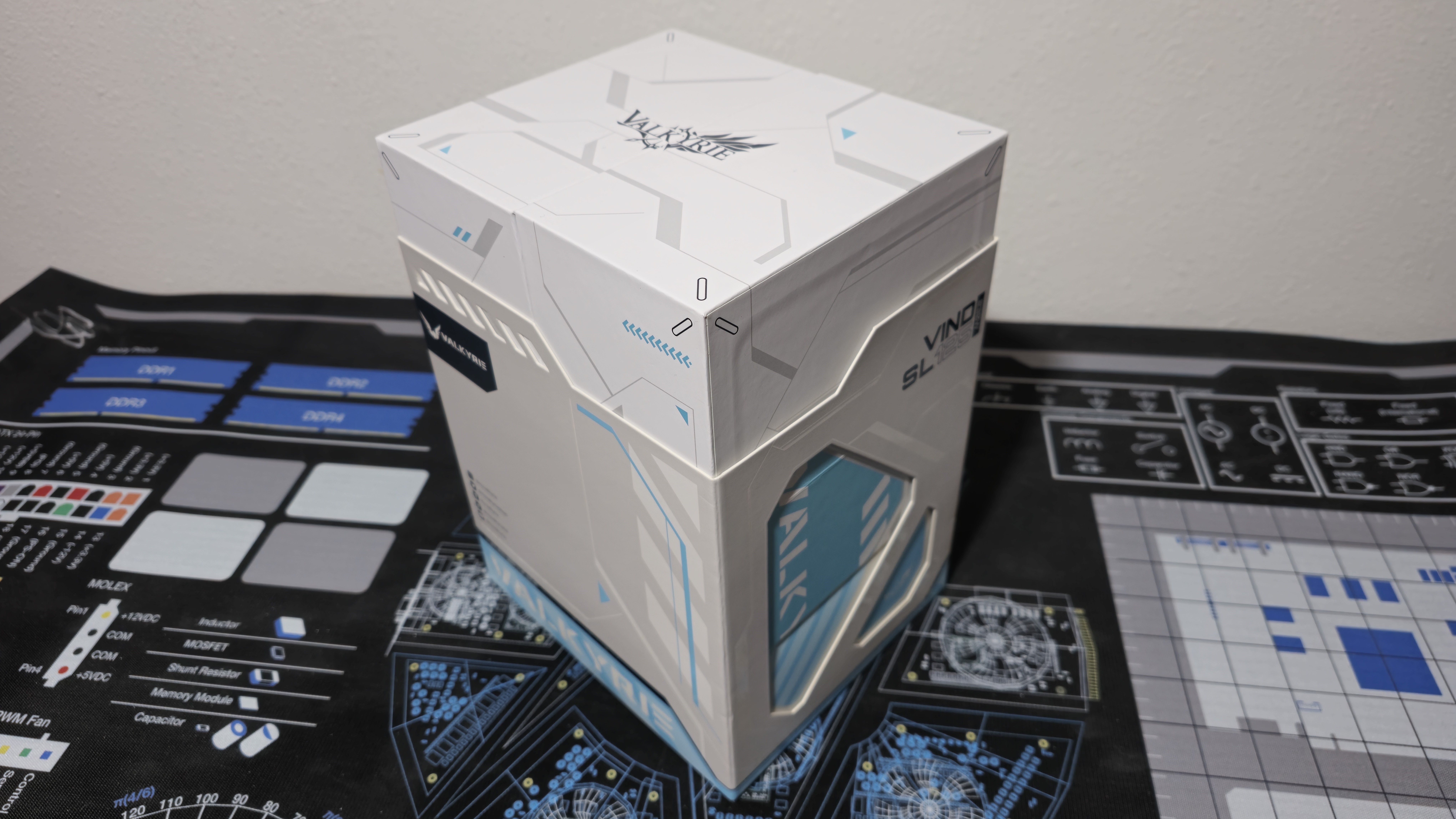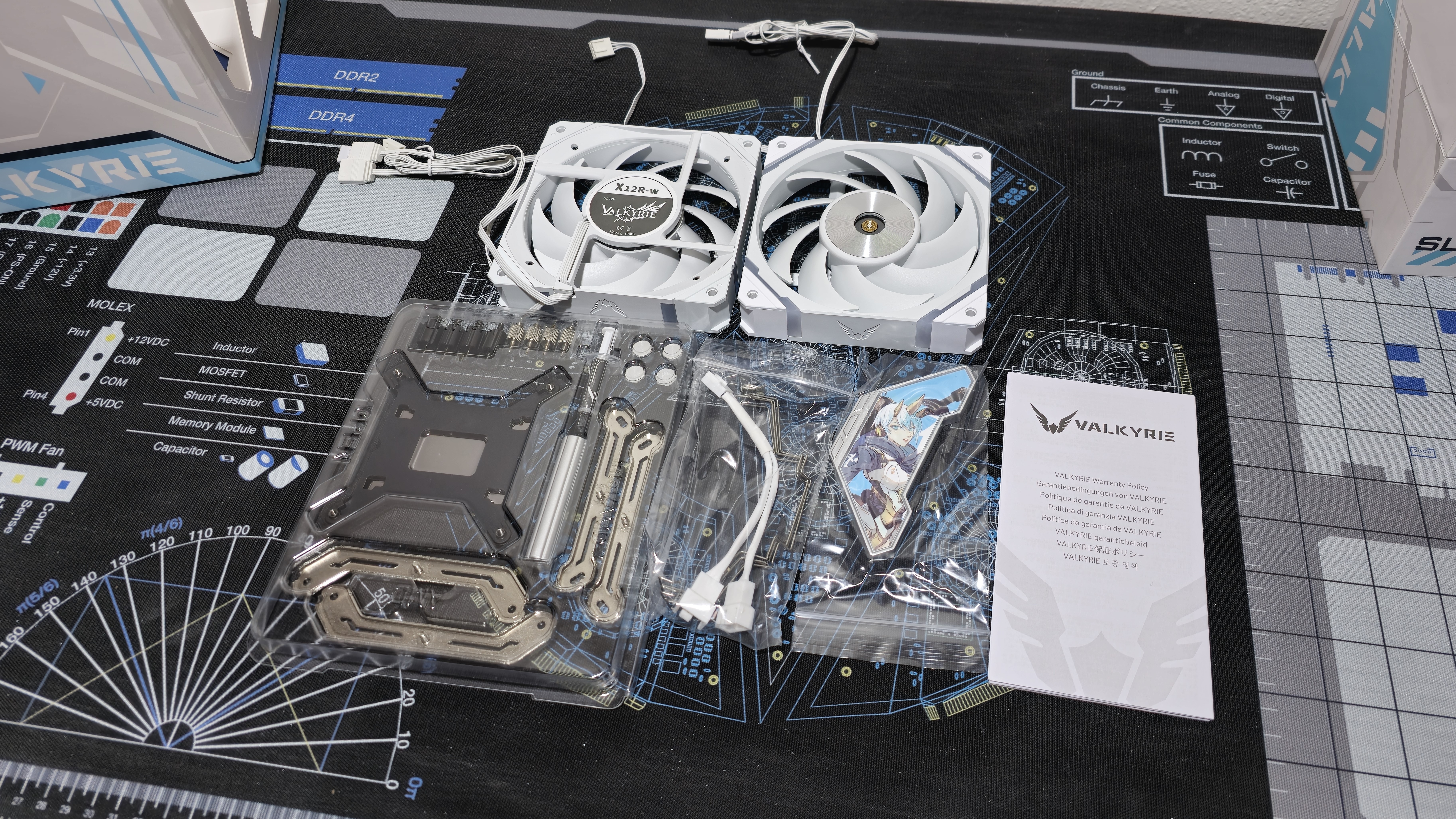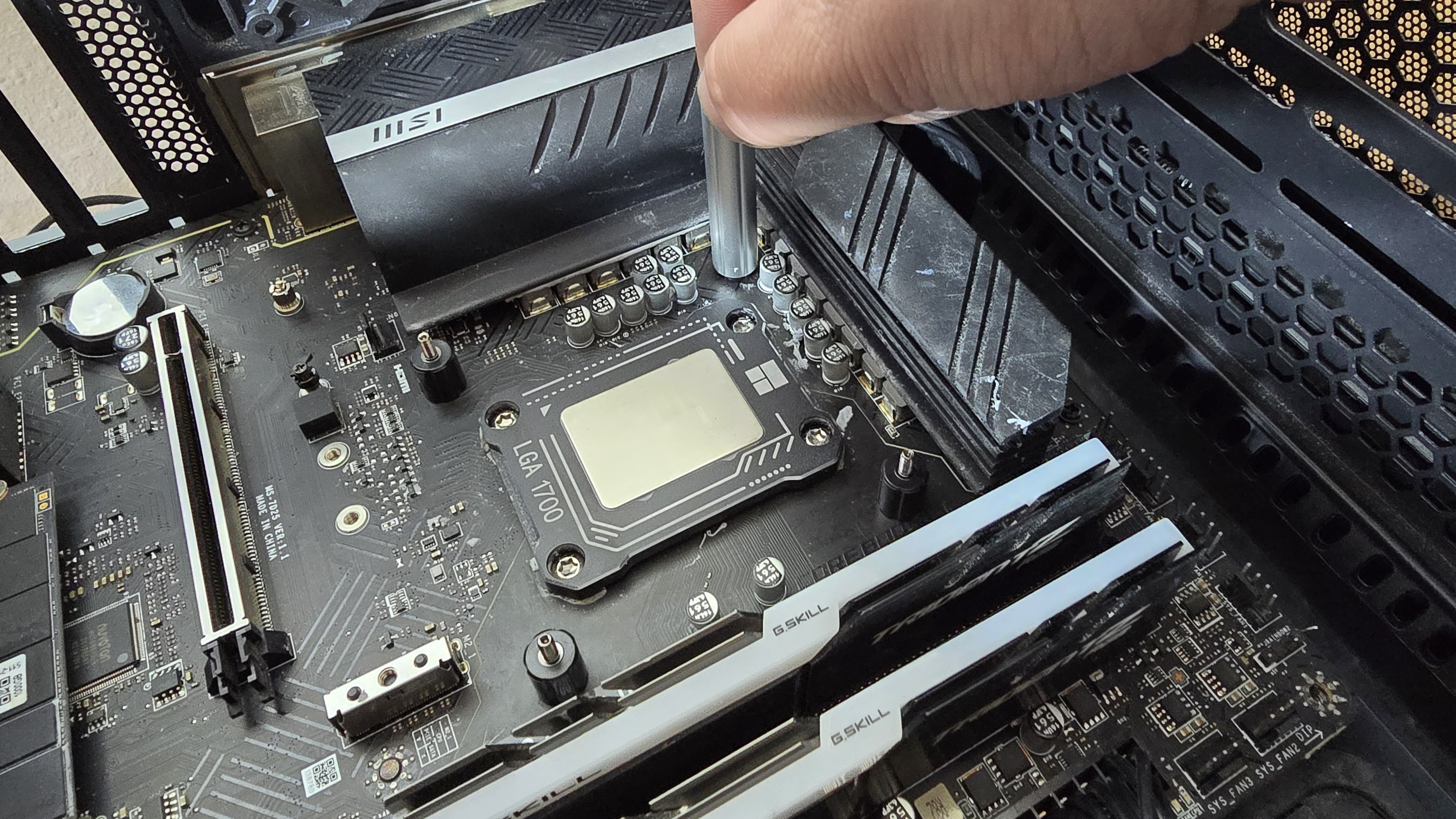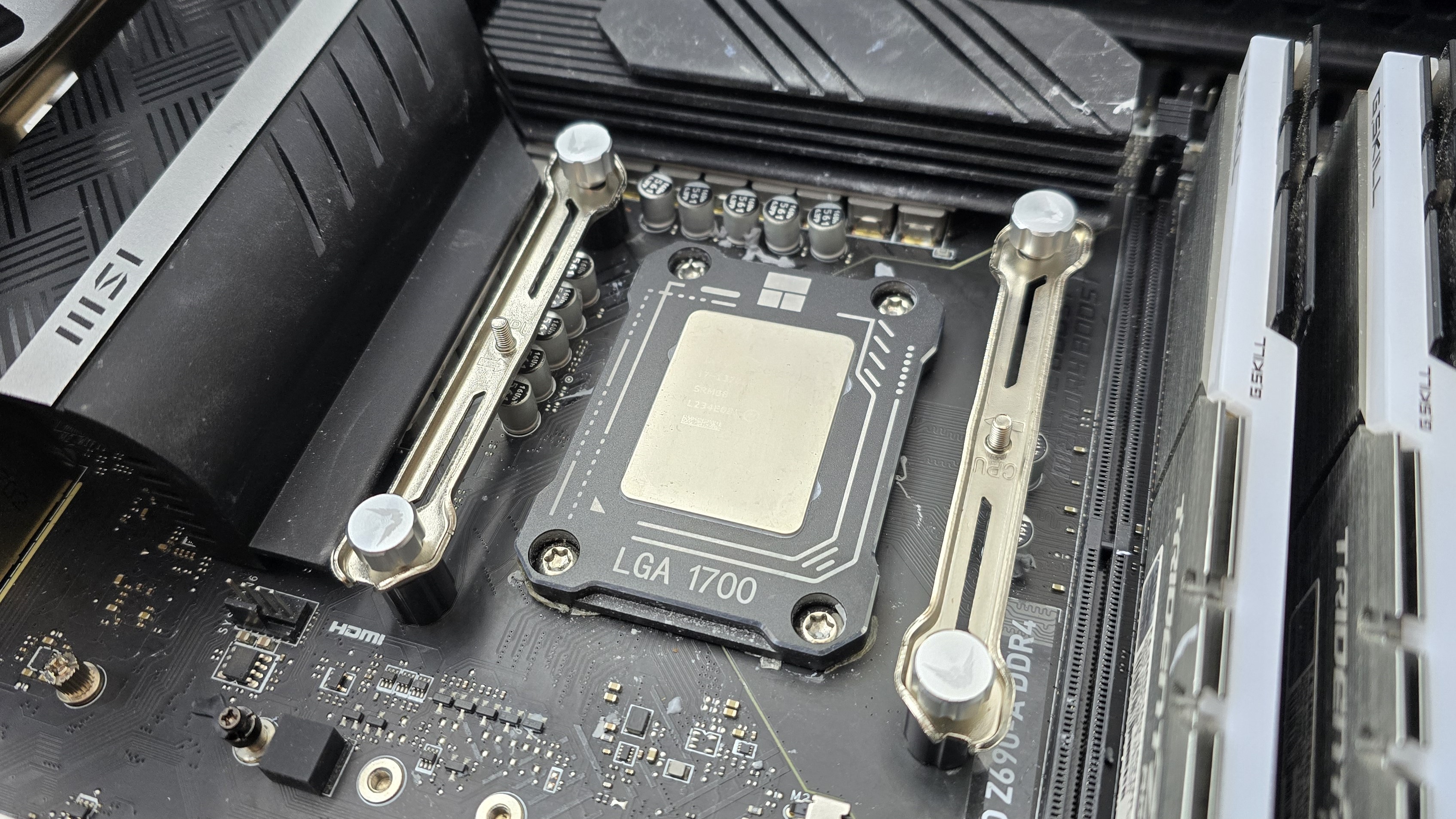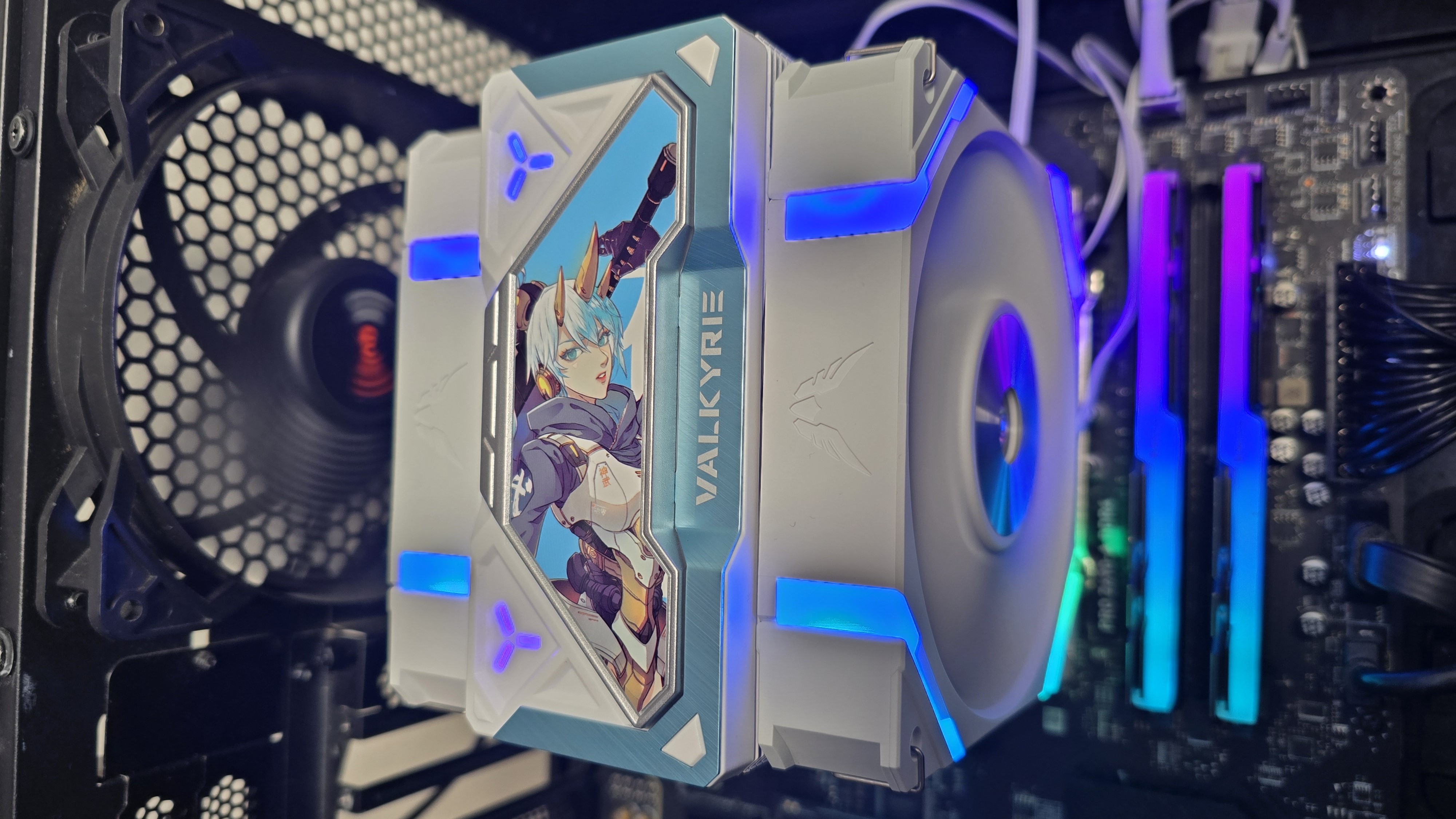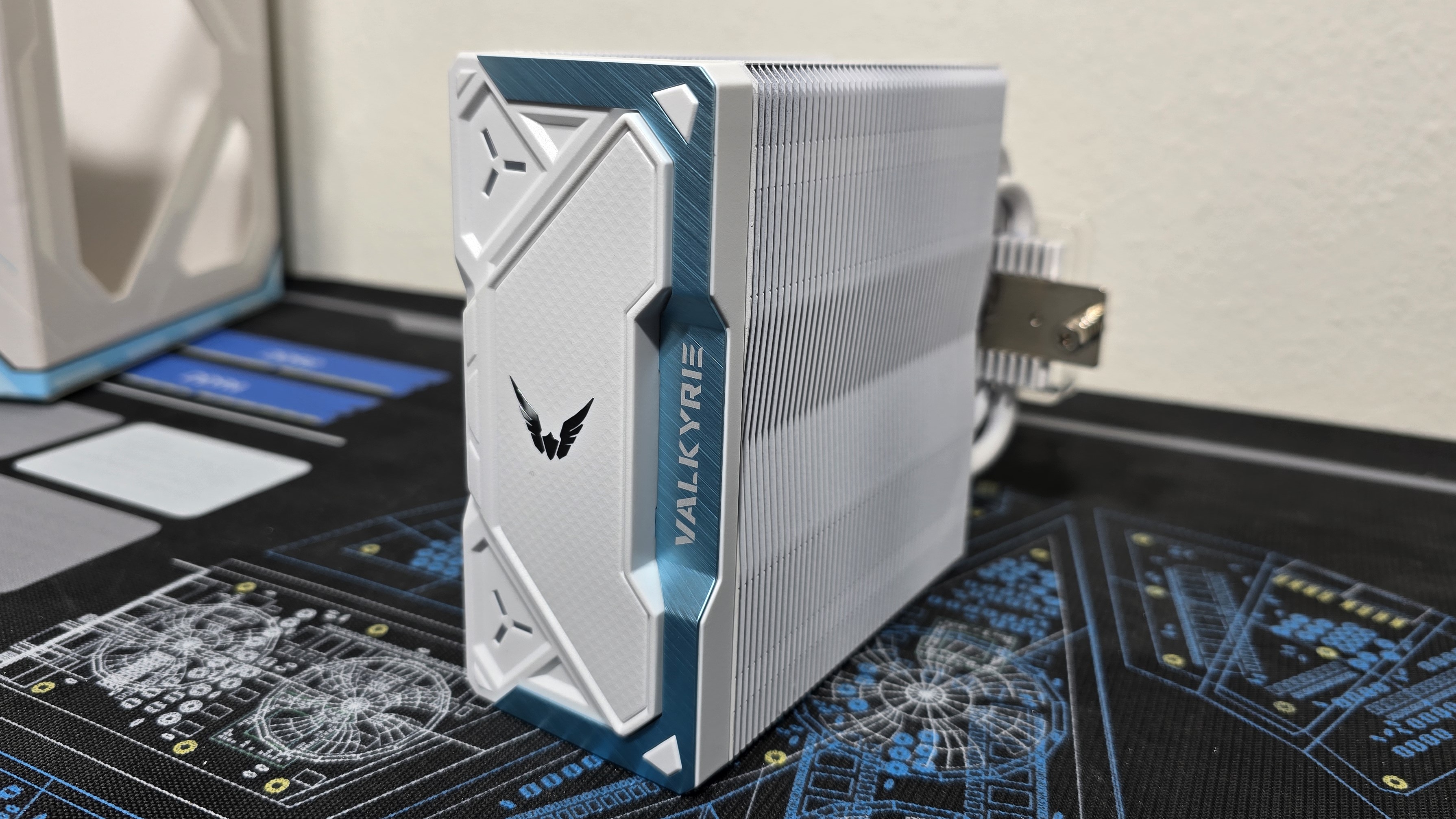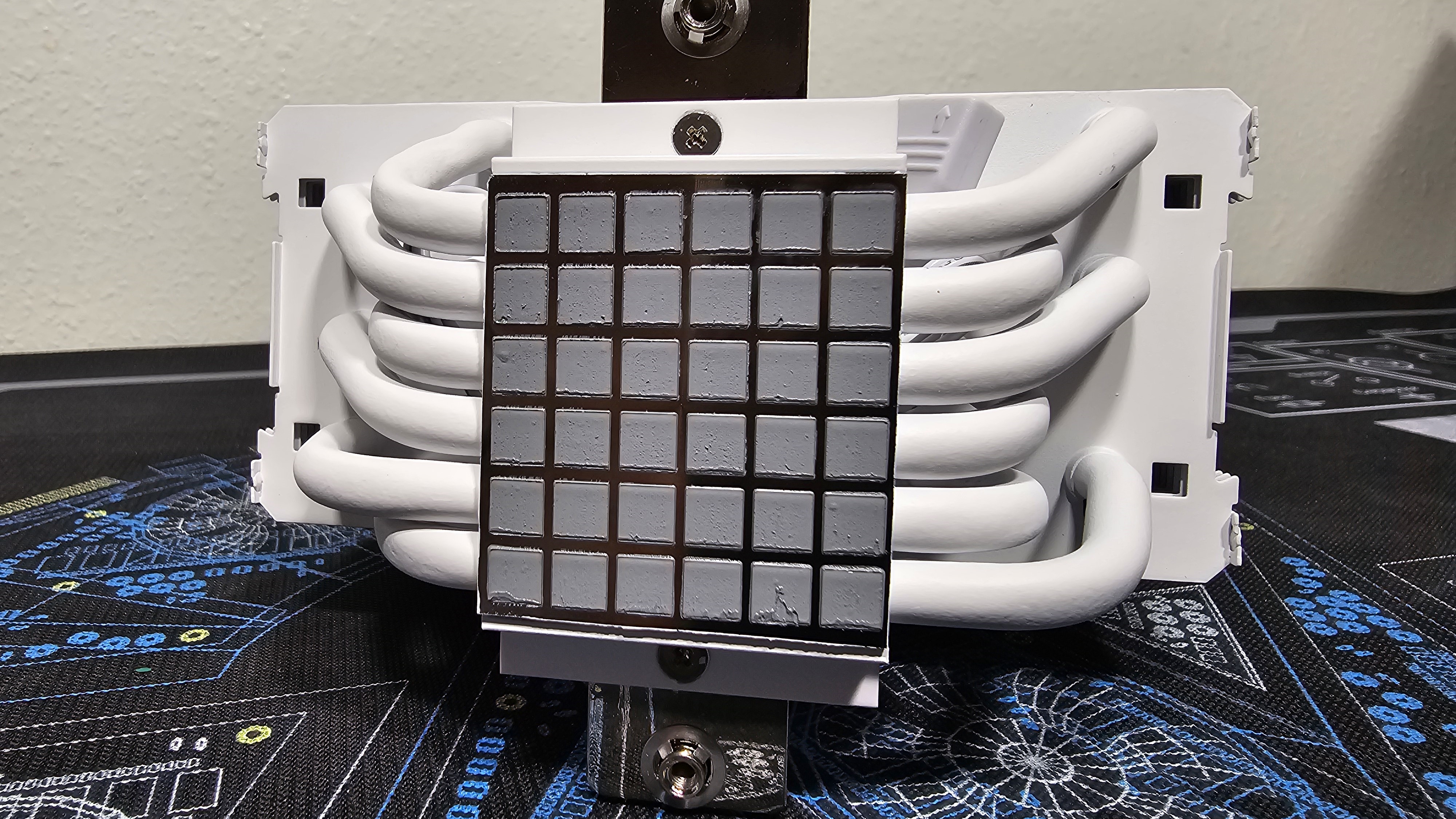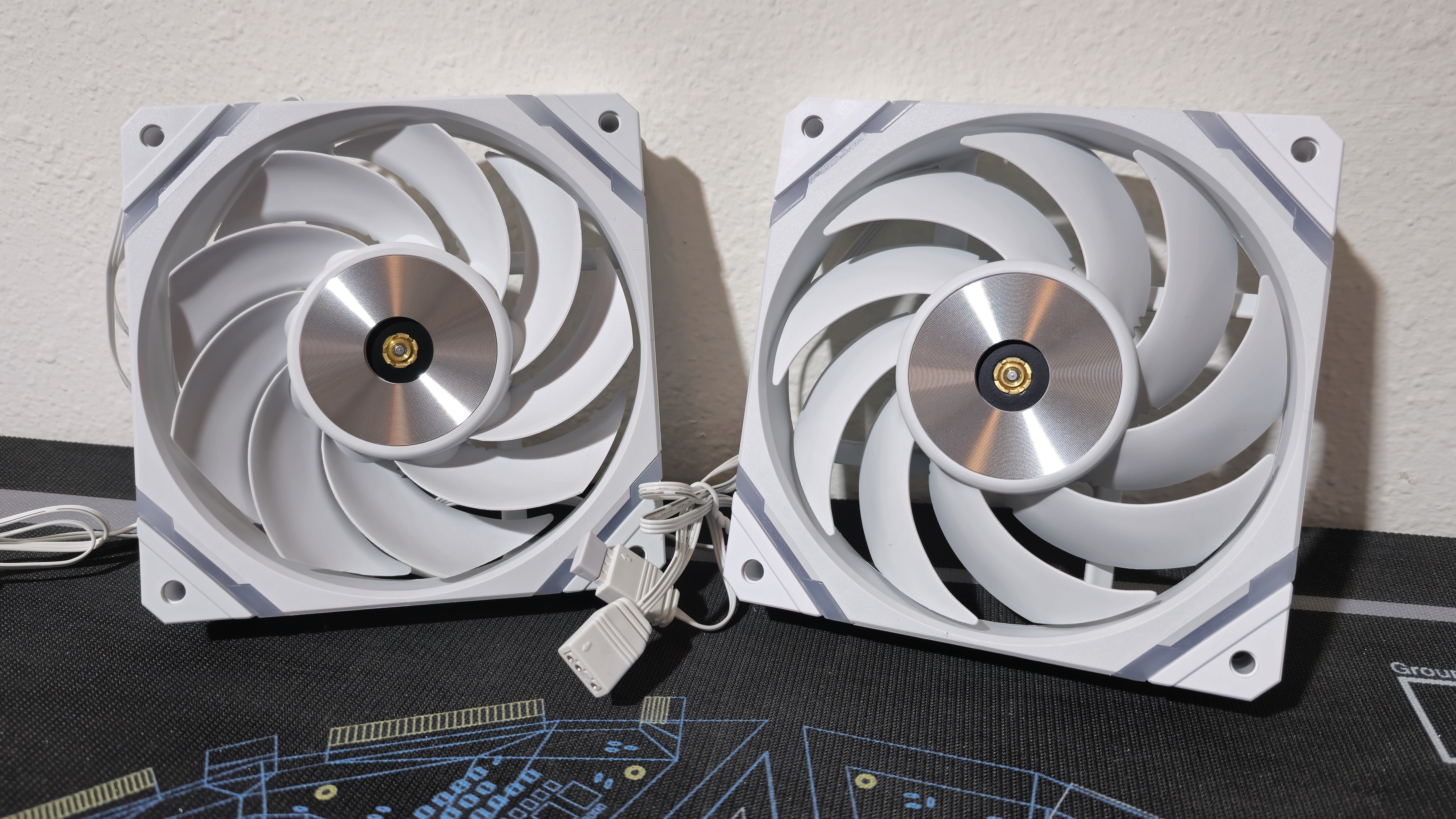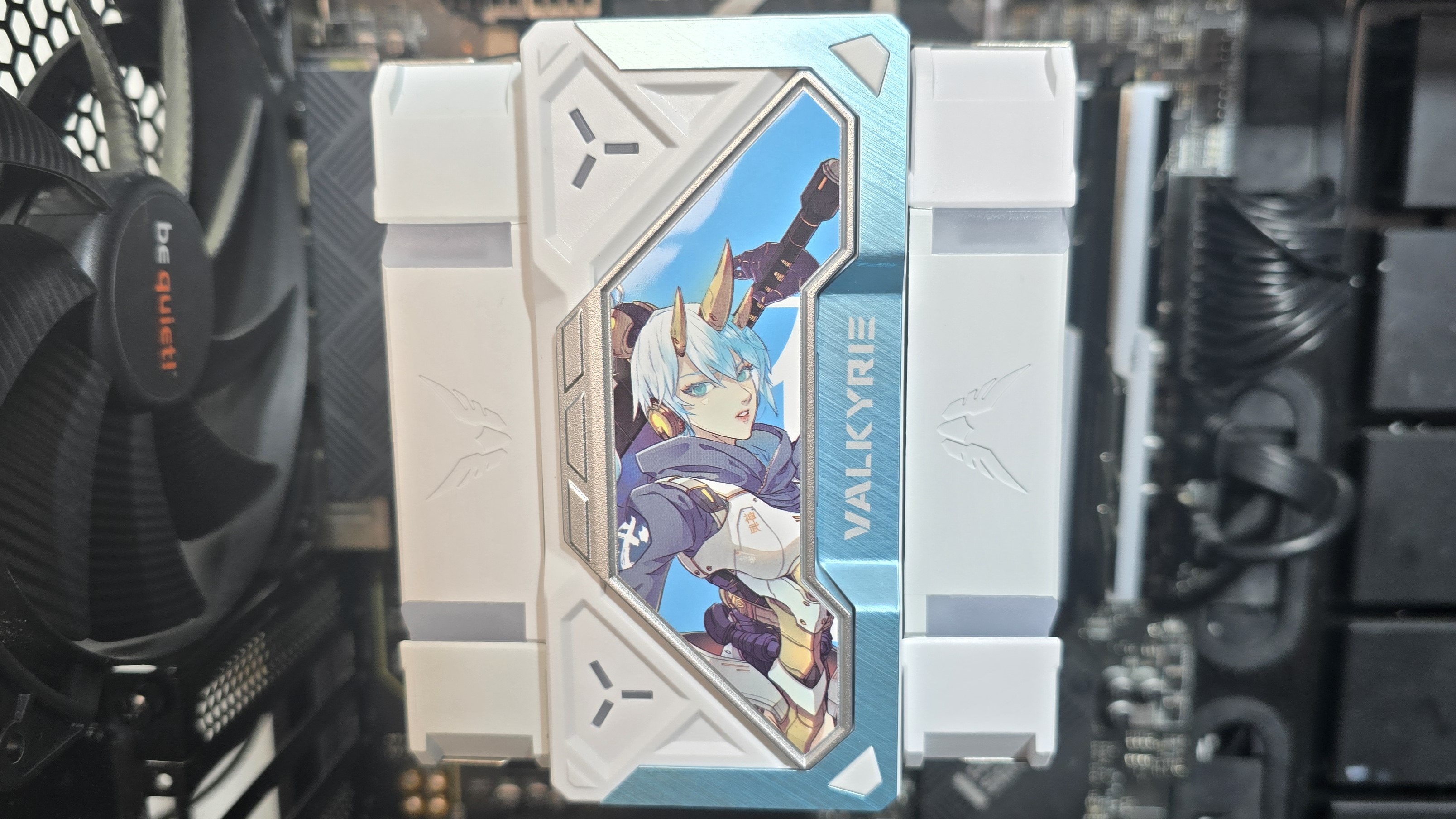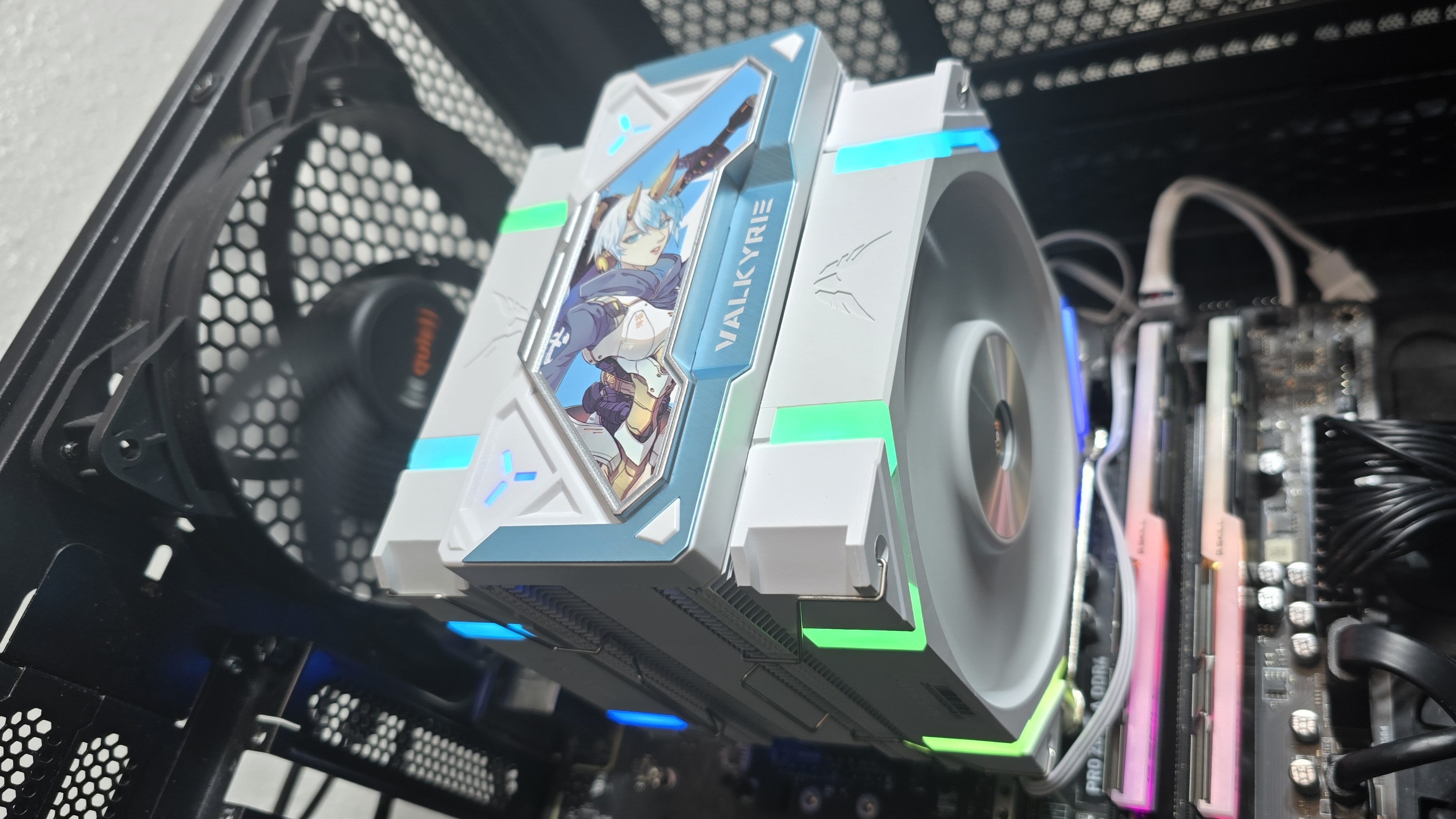Tom's Hardware Verdict
The Vind SL125 sure does have fancy packaging and a unique aesthetic, but it’s not recommended due to high noise levels and mediocre performance.
Pros
- +
Fancy packaging
- +
White/Blue Aesthetic
Cons
- -
Mediocre performance
- -
Loud noise levels
- -
Priced like a high-end cooler
Why you can trust Tom's Hardware
Valkyrie has only recently come across our radar as a new cooling company on the block. The company's website states the team is comprised of more than 360 members with over 17 years of experience in cooling, so (the math of the previous stats notwithstanding) we expected a lot when the Valkyrie Vind SL125 showed up.
In the near future we’ll be looking at Valkyrie’s AIOs, but today’s review will cover the Vind SL125. Does it have what it takes to earn a spot on our best coolers list? We’ll have to put it through testing to find out. But first, here are the specifications from Valkyrie.
Cooler specifications
| Cooler | Valkyrie Vind SL125 - White |
| MSRP | $69.99 USD |
| Heatsink Material | Aluminum |
| Rated Lifespan | Unlisted |
| Socket Compatibility | Intel Socket LGA 1851/1700/1200/115x/20xx AMD AM5 / AM4 |
| Base | Copper |
| Max TDP (Our Testing) | ~198W with Intel’s i7-13700K |
| Installed Size (with fans) | 125mm (L) x 109 mm (W) x 157.5mm (D) |
| Warranty | 5 years |
Packing and included contents
The packaging of this cooler is extremely fancy, unlike any other air cooler I’ve tested previously.
The “box” you see above is actually two boxes held together by an outer frame, with the installation guide tucked in between the shell and the boxes.
When you open the box containing the cooler, it has a bit of a dramatic effect presenting the product. You can see it in this GIF.
Included with the cooler are the following:
- Heatsink
- Two 120mm fans
- Mounting for modern AMD and Intel Platforms
- Pre-applied thermal paste
- Extra 1g tube of thermal paste
- Anime-themed cover
LGA 1700 Installation
Installing the Valkyrie Vind SL125n is fairly straightforward.
Get Tom's Hardware's best news and in-depth reviews, straight to your inbox.
1. First, apply the backplate to the rear of the motherboard.
2. Next, use the included tool to secure the mounting standoffs to the backplate.
3. Place the mounting bars on top of the standoffs, and secure them with the included thumb screws.
4. Press the heatsink against the mounting bars and secure them with a screwdriver.
5. Attach the fans.
6. Connect the PWM and ARGB connections to your motherboard, and turn the computer on.
Features of Valkyrie’s VIND SL125
▶ White and Blue Aesthetic
▶ Six Copper Heatpipes, Pre-Applied Thermal Paste
The Vind SL125 has six heatpipes connected to the CPU plate. It also features pre-applied thermal paste to make installation easier.If you need more paste, Valkyrie also includes a 1g tube for backup.
▶ Detachable covers
The cooler comes with your choice between two detachable covers. The default cover is white and feature’s Valkyrie’s logo. The second cover is anime-styled.
▶ 2x 120mm fans
I say this on almost every cooler review, but there’s more to a cooler than just the heatsink or radiator. The bundled fans have a significant impact on cooling and noise levels, as well as how the cooler looks in your case.
You’ll need to be careful when installing the fans. If you look carefully, you’ll see the blades are shaped differently. Each fan pulls in a different direction, making it easy to install the fans incorrectly. The cooler will lose 10-20% of its cooling capability if this happens. An easy way to verify if you have installed the fans in the correct orientation is by looking at the Valkyrie logos – they should be facing each other, as shown in the picture below.
The fans include RGB strips cutting across the corners of each fan, providing an illuminating accent.
| Model | Unlisted |
| Dimensions | 120 x 120 x 25mm |
| Fan Speed | 800-2,150 RPM ± 10% |
| Air Flow | Up to 80 CFM |
| Air Pressure | Up to 3.14 mmH2O |
| Bearing Type | Unlisted |
| Lighting | ARGB |
| MFFT | 5 Year Warranty |
LGA1700 Socket Bending
There are many factors other than the CPU cooler that can influence your cooling performance, including the case you use and the fans installed in it. A system's motherboard can also influence this, especially if it suffers from bending, which results in poor cooler contact with the CPU.
In order to prevent bending from impacting our cooling results, we’ve installed Thermalright’s LGA 1700 contact frame into our testing rig. If your motherboard is affected by bending, your thermal results will be worse than those shown below. Not all motherboards are affected equally by this issue. I tested Raptor Lake CPUs in two motherboards. And while one of them showed significant thermal improvements after installing Thermalright’s LGA1700 contact frame, the other motherboard showed no difference in temperatures whatsoever. Check out our review of the contact frame for more information.
Testing Methodology, and how my testing differs vs the competition
My cooler testing is designed to emulate the conditions a user would actually experience when using a computer. Some reviewers test coolers using an open bench. I do not like this method, it reduces cooling difficulty. When you use a case, the internal temperature of that case will become higher than that of the room’s ambient temperature, increasing the saturation of the cooler and overall cooling difficulty. Testing outside of a case will give an advantage to weaker coolers, especially those with fans that aren’t very strong.
Others test using a thermal heatplate. This method suffers from all the drawbacks of an open bench, but also doesn’t accurately represent cooling a CPU. A thermal plate evenly distributes a thermal load across the copper heat conduction square. The problem with this type of testing is that modern AMD Ryzen and Intel Core CPUs have most of their heat concentrated in a few hotspots – and cooling a concentrated source of heat is more difficult than cooling a source that’s spread evenly.
The last thing I do differently from some cooler testers is that I insist on using relatively new CPUs for cooler testing because people building new PCs are likely using recent CPUs. Also, thermal density is just different with newer CPUs. Products like Ryzen 3000 “Zen 2” and older 14nm Intel CPUs have lower heat density compared to modern counterparts, due to a combination of using older manufacturing processes and running at lower clock speeds. Using a weaker cooler with an older CPU can make the cooler look better performing than it actually is with current-gen silicon.
Today's highest-end CPUs, whether Intel or AMD, are difficult to cool in intensive workloads. In the past. reaching 95 degrees Celsius or more on a desktop CPU might have been a cause for concern. But with today’s top-end CPUs, this is considered normal operation. Similar behavior has been present in laptops for years due to cooling limitations in tight spaces.
All testing is performed with a 23C ambient room temperature. Multiple thermal tests are run on each CPU to test the cooler in a variety of conditions, and acoustic measurements are taken with each result. These tests include:
1. Noise-normalized testing at low noise levels
2. “Out-of-the-box”/Default configuration thermal and acoustic testing
a. No power limits enforced
b. Because CPUs hit TJ Max in this scenario, the best way to compare cooling strength is by recording the total CPU package power consumption.
3. Thermal and acoustic testing in power-limited scenarios
a. Power limited to 175W to emulate a medium-intensity workload
b. Power limited to 125W to emulate a low-intensity workload
The thermal results included are for 10-minute testing runs. To be sure that was sufficiently long to tax the cooler, we tested both Thermalright’s Assassin X 120 R SE and DeepCool’s LT720 with a 30-minute Cinebench test with Intel’s i9-13900K for both 10 minutes and 30 minutes. The results didn’t change much at all with the longer test: The average clock speeds maintained dropped by 29 MHz on DeepCool’s LT720 and 31 MHz on Thermalright’s Assassin X 120 R SE. That’s an incredibly small 0.6% difference in clock speeds maintained, a margin of error difference that tells us that the 10-minute tests are indeed long enough to properly test the coolers.
Testing configuration – Intel LGA1700 platform

Albert Thomas is a contributor for Tom’s Hardware, primarily covering CPU cooling reviews.
-
-Fran- Not a cooler I would ever buy, because I like my PCs black and in a corner where I can't hear them or see them, but it's definitely a looker for the right crowd. It's a shame they dropped the ball on the higher power loads, but to be fair, given its construction I wouldn't have expected more cooling out of it. The price though, that's where the debate will be interesting, as it's definitely what will do or break this. Completely agree the crowd for this cooler is not enthusiast, but theme-builders first. Which is an interesting thing to think of: is it more of a "budget theme builder" type of cooler? The price is definitely high, but how much would it be anodizing your own cooler (like, say, a Peerless Assassin) into what you want and all that?Reply
Interesting product for sure, but not one that I would personally buy.
As always, nice review Albert and thanks for the data!
Regards. -
Amdlova @Albert.Thomas This cooler it's not loud! just a Valkyrie Scream forever Everytime your Cpu has load!Reply -
expunged Reply
This just continuing a worrying situation. These companies are investing more time into the aesthetics than the engineering and you get a nice looking product that does not preform.Admin said:The Valkyrie VIND SL125 is an anime-themed cooler with fancy packaging, but can it compete with other similarly priced products?
Valkyrie Vind SL125 Review: Anime aesthetic meets underwhelming performance : Read more -
Albert.Thomas Reply
Have you tried it? hahaAmdlova said:@Albert.Thomas This cooler it's not loud! just a Valkyrie Scream forever Everytime your Cpu has load!
